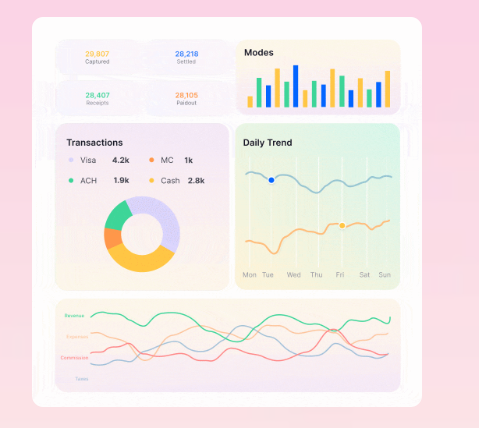In the world of financial management, accuracy and efficiency are paramount. Reconciliation, the process of comparing and aligning financial data across different accounts or records, is a crucial aspect of maintaining financial integrity. With the advent of technology, reconciliation automation has emerged as a game-changer, offering businesses a more efficient and error-resistant way to manage their financial data. This article explores the significance of reconciliation automation and how it transforms traditional reconciliation processes.
Understanding Reconciliation Automation:
1. Definition:
Reconciliation automation involves the use of software solutions to streamline and automate the reconciliation process. This includes matching financial transactions, identifying discrepancies, and ensuring that records across various systems are in sync.
2. Data Sources:
Reconciliation automation can handle data from diverse sources, including bank statements, financial reports, invoices, and other transaction records. It eliminates the need for manual data entry and reduces the risk of human errors.
3. Matching Algorithms:
Advanced matching algorithms are a hallmark of reconciliation automation. These algorithms analyze data sets, identify patterns, and automatically reconcile transactions, saving time and reducing the likelihood of discrepancies.
4. Real-Time Reconciliation:
Unlike manual reconciliation, which may take days or weeks, reconciliation automation enables real-time reconciliation. This means that discrepancies can be identified and addressed promptly, improving the overall accuracy and timeliness of financial reporting.
5. Exception Handling:
Reconciliation automation systems often include exception handling capabilities. When discrepancies or anomalies are detected, the system can flag them for review, allowing finance professionals to focus on resolving specific issues rather than sifting through large volumes of data.
Benefits of Reconciliation Automation:
1. Time Efficiency:
One of the primary advantages of reconciliation automation is the significant time savings it offers. Automated processes can handle large volumes of data at high speeds, allowing finance teams to reallocate their time to more strategic tasks.
2. Accuracy and Error Reduction:
Automation minimizes the risk of human errors associated with manual reconciliation. By leveraging sophisticated algorithms, reconciliation automation enhances accuracy and ensures that financial data is consistently aligned across various systems.
3. Improved Compliance:
For industries with stringent regulatory requirements, reconciliation automation helps ensure compliance. Automated systems can generate accurate and auditable reports, providing a transparent trail of financial transactions and reconciliation activities.
4. Cost-Effectiveness:
While there may be an initial investment in implementing reconciliation automation, the long-term cost savings are considerable. Reduced manual labor, fewer errors, and improved efficiency contribute to overall cost-effectiveness.
5. Scalability:
Reconciliation automation is scalable, making it suitable for businesses of all sizes. Whether managing a small business or handling the financial complexities of a large enterprise, automation can adapt to the volume and complexity of financial transactions.
6. Enhanced Decision-Making:
With accurate and up-to-date financial data at their fingertips, decision-makers can make more informed and strategic decisions. Reconciliation automation provides a clear and reliable financial picture, empowering organizations to navigate challenges and capitalize on opportunities.
In conclusion, reconciliation automation represents a transformative shift in financial management practices. By harnessing the power of technology, businesses can streamline their reconciliation processes, enhance accuracy, and unlock valuable time and resources for more strategic initiatives. As organizations increasingly recognize the benefits of reconciliation automation, it becomes a cornerstone for maintaining financial health and agility in today's dynamic business landscape.
For more info. Visit us:
Bank Reconciliation Software for Fintech





Comments